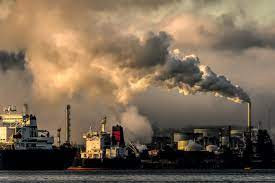Infrastructure

Transportation Infrastructure:
Roads and Highways: Critical for the movement of goods and people. Well-maintained roads reduce travel time and vehicle operating costs.
Bridges and Tunnels: Essential for connecting regions divided by natural barriers, facilitating uninterrupted transport routes.
Railways: Efficient for long-distance and bulk transportation of goods and passengers. They reduce traffic congestion and are often more environmentally friendly than road transport.
Airports: Enable rapid movement of people and high-value goods across long distances, supporting global connectivity.
Seaports: Crucial for international trade, handling large volumes of cargo, including raw materials and finished goods.
Utilities Infrastructure:
Water Supply Systems: Provide clean and safe drinking water to homes, businesses, and industries. They include reservoirs, treatment plants, and distribution networks.
Sewage and Waste Management: Involves the collection, treatment, and disposal of waste. Proper waste management prevents pollution and protects public health.
Electrical Grids: Supply power to residential, commercial, and industrial users. Reliable electricity is vital for almost all modern-day activities and economic operations.
Natural Gas Pipelines: Deliver fuel for heating, cooking, and industrial processes, often more efficiently and with fewer emissions than other fossil fuels.
Communication Infrastructure:
Telecommunication Networks: Include telephone lines, cellular networks, and satellite communications, enabling voice and data transmission over long distances.
Internet and Broadband: Essential for the digital economy, providing high-speed internet access that supports everything from e-commerce to remote work and education.
Social Infrastructure:
Educational Facilities: Schools, colleges, and universities that provide education and training, which are fundamental for human capital development.
Healthcare Facilities: Hospitals, clinics, and health centers that offer medical services, contributing to public health and well-being.
Public Buildings: Libraries, community centers, and government offices that serve various administrative and social functions.
Environmental Infrastructure:
Green Spaces: Parks, nature reserves, and recreational areas that enhance quality of life and provide ecological benefits.
Sustainable Infrastructure: Renewable energy installations (solar, wind), green buildings, and sustainable urban drainage systems that mitigate environmental impact and promote sustainability.
Investing in and maintaining robust infrastructure is essential for economic growth, social stability, and environmental sustainability. It enables efficient resource use, enhances productivity, and provides the backbone for societal development.
International Research Excellence and Best Paper Awards
Nomination Link: https://x-i.me/bpanom12
Visit: https://bestpaperaward.blogspot.com/
#Infrastructure #SustainableInfrastructure #UrbanDevelopment #TransportInfrastructure
#SmartCities #PublicUtilities #CleanEnergy #RoadsAndBridges #Telecommunications
#WaterSupply #WasteManagement #PublicTransport #GreenInfrastructure #EconomicGrowth
#InfrastructureInvestment #CivilEngineering #SmartInfrastructure #ModernCities #DigitalInfrastructure #CommunityDevelopment
Facebook: www.facebook.com/profile.phpid=100087106114908
Twitter : twitter.com/bestpaperaward
Pinterest : in.pinterest.com/bestpaperaward
Linkedin : www.linkedin.com/in/esha-gupta-18b2b4245
Instagram: www.instagram.com/eshagupta__2022/



Comments
Post a Comment